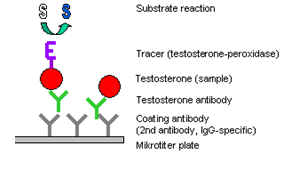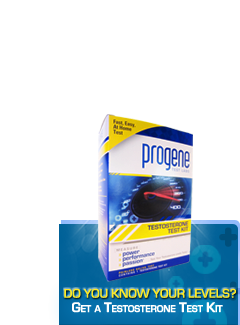About Your Testosterone Laboratory Test
Because your body produces and circulates varying levels of testosterone throughout the course of a day, you were asked to collect and submit several samples taken at different time-points in order to create an averaging effect and provide more accurate feedback.
The samples you submitted were tested in a licensed and certified laboratory testing facility specializing in endocrinology. Samples are tested in the laboratory by trained scientists using highly complex ELISA methodology.
ELISA is an acronym for Enzyme-linked immunosorbent assay and it is acknowledged to be a reliable format for a spectrum of laboratory analysis work. The ELISA assay test system that is used to test your samples has passed FDA clearance requirements and is suitable for use in diagnostic laboratory procedures.
The lab test is a multi-step process that ultimately compares the level of testosterone found in your samples to a set of standards with pre-determined levels of testosterone in them. As a general overview, when your samples are introduced into the ELISA test system, any testosterone in the samples will be “captured” by the test reagents. In subsequent steps of the assay, additional reagents are added that allow the scientists to actually detect and quantify the captured testosterone. Ultimately the level of testosterone in your samples is determined by reading optical density values from laboratory instrumentation.

To be more specific, the assay schematic above pictures a competitive-binding ELISA assay.
In this assay an unknown amount of testosterone present in the sample and a fixed amount of testosterone conjugated with horseradish peroxidase (enzyme) compete for binding sites on testosterone antiserum that has been pre-coated onto a microtiter plate. After incubation, the microtiter plate is gently washed with a suitable reagent, and then a tetramethylbenzidine substrate is introduced to the microtiter plate. This substrate is a clear, colorless liquid that will turn blue in the presence of certain enzymes, such as horseradish peroxidase. After a second incubation, any color development that was generated by the interaction of horseradish peroxidase and tetramethylbenzidine is stopped by addition of a reagent that causes a shift in the pH of the solution. After that, the optical densities of all samples and standards are read and recorded on a programmable spectrophotometer. The concentration of testosterone in the samples is calculated as inversely proportional to the optical density of the blue coloration that developed in the steps of the assay.


 Progene's Dual Action formula contains clinically proven testosterone precursors and rare herbal extracts to help support your body's natural production of testosterone.
Progene's Dual Action formula contains clinically proven testosterone precursors and rare herbal extracts to help support your body's natural production of testosterone.



